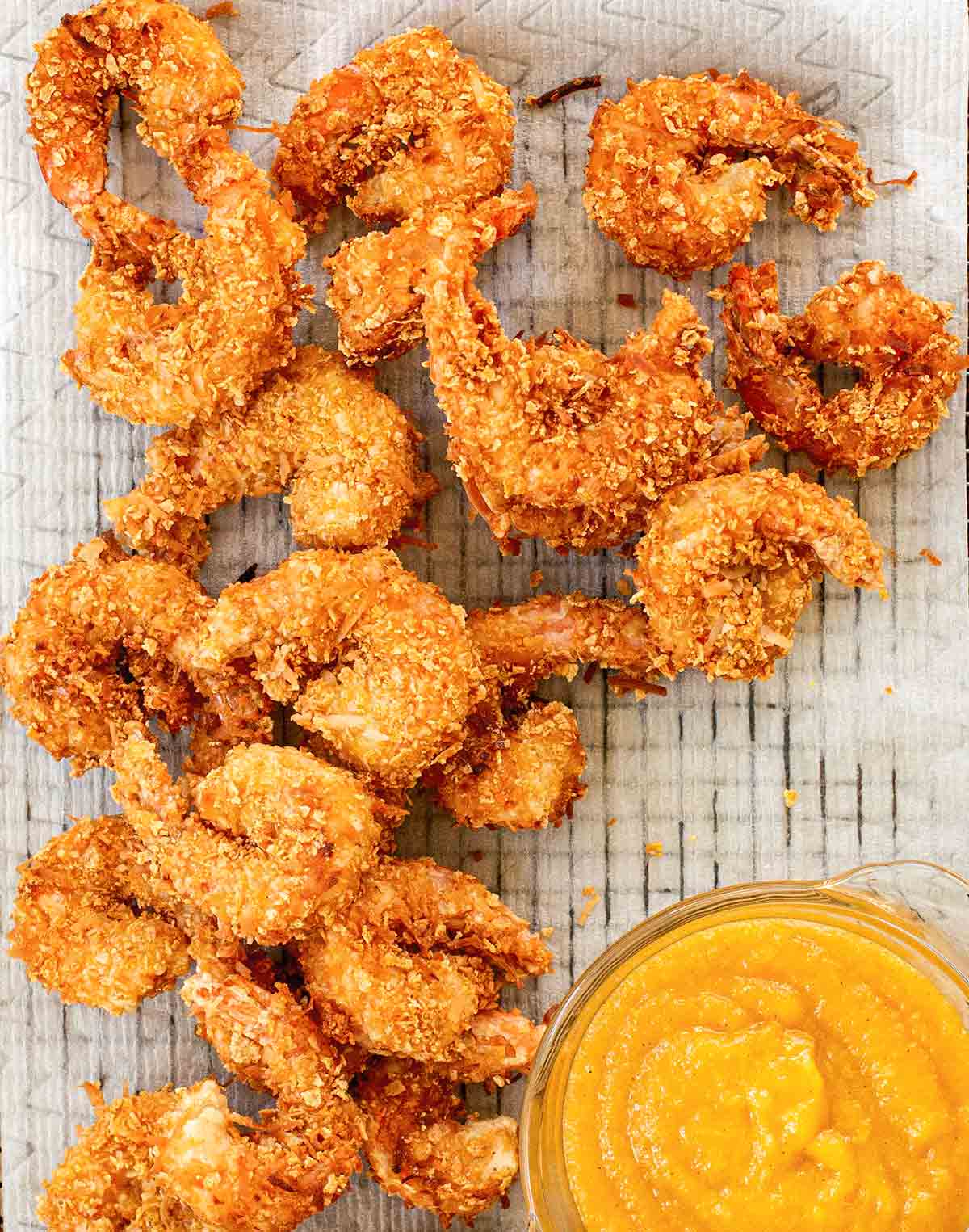
Imagine the most gigantic, moist shrimp you’ve ever seen, tails still on, enrobed in a crisp, golden brown coconut coating, and you’ll get the picture of this festive but fast dinner or amazing appetizer. It’s one of the many memorable dishes I tasted in Campeche, a state in Yucatán with a long coastline along the Gulf of Mexico. Though Campeche is not as well known as other parts of the Yucatán Peninsula, it boasts stupendous seafood and many charming towns and villages.
For the coating, some cooks use sweetened shredded coconut, others use unsweetened. I choose both because I love the chewy texture and moist sweetness of the sweetened coconut, but I also like the fragrance and drier crunch of unsweetened. I combine them with bread crumbs.—Pati Jinich
Want to save this?
Coconut Shrimp FAQs
It depends on why you’re substituting them. If you just can’t find them, you can use Scotch bonnets because they’re both quite hot. If you want a lesser level of heat, jalapeños and serranos both have a mild flavor and less heat.
Piloncillo is made by boiling down cane juice into a thick, crystalline syrup. It’s then left to harden. It has an earthiness to it with hints of both bitterness and sweetness. Similar to brown sugar, there are two types of piloncillo available: blanco (light) and oscuro (dark). For this recipe, if you’re going to substitute brown sugar, we recommend using dark brown so you get that deep molasses flavor.
Actually, no. This recipe is best when eaten as soon as it’s ready. Letting it sit, like on a buffet, or trying to reheat the shrimp isn’t going to do it any favors. The shrimp and coconut will lose the crispy, crunchiness that makes them so good. Make ’em and eat ’em right away.

Coconut Shrimp
Ingredients
For the mango habanero salsa
- 3 large (about 3 pounds) mangoes, peeled, pitted, and cut into chunks (about 4 1⁄2 cups)
- 3/4 cup (3 3/4 oz) coarsely chopped white onion
- 1/2 cup unseasoned rice vinegar or white vinegar
- 1/2 cup water
- 1/4 cup (2 oz) packed dark brown sugar or grated piloncillo
- 1/4 teaspoon ground allspice
- 1 teaspoon kosher salt, plus more if needed
- 1 to 2 fresh habanero chiles, quartered and seeded
- 2 tablespoons olive oil
For the coconut shrimp
- 1 cup (3 oz) shredded or flaked unsweetened coconut (not chips)
- 1 cup (3 oz) shredded or flaked sweetened coconut (not chips)
- 1 cup (3 oz) unseasoned bread crumbs
- 1 teaspoon kosher salt
- 1/2 teaspoon freshly ground black pepper
- 1 cup all-purpose flour
- 4 large eggs
- Mild vegetable oil, for deep-frying
- 2 pounds extra-large shrimp, peeled, tails left on, and deveined
Instructions
Make the mango habanero salsa
- In a blender, combine the mangoes, onion, vinegar, water, brown sugar, allspice, and salt and purée until smooth.
- Add one habanero, blend, and taste to see if you want to add more heat. If it isn’t too hot for you, add the second one—or part of it—and blend until smooth. Keep in mind that cooking the salsa tames the heat a bit, and it will calm down a little more as it sits.
- In a medium saucepan over medium heat, warm the oil. Add the mango mixture, cover partially (the salsa will splatter a lot), and cook, stirring occasionally and scraping the bottom of the pan to prevent scorching, until the salsa resembles a thick pudding and coats the back of a wooden spoon quite heavily, about 15 minutes.
- Remove from the heat and allow to cool before serving. The salsa will keep, tightly covered, for 5 to 7 days in the refrigerator.
Make the coconut shrimp
- In a baking dish or wide bowl, mix the unsweetened and sweetened coconut, bread crumbs, 1/2 teaspoon of salt, and pepper.
- Put the flour on a large plate or in a wide bowl. In a shallow bowl, combine the eggs and the remaining 1/2 teaspoon salt and beat well with a whisk or fork.
- In a large deep skillet over medium heat, warm 1 inch (25 mm) of oil to 350°F (180°C), at least 5 minutes. Set a cooling rack on a rimmed baking sheet lined with paper towels.
- While the oil is heating, dredge each shrimp in the flour so it is completely coated, tapping or shaking off the excess flour, dip into the beaten eggs, turning to coat, and then place on the coconut mixture and press down while patting and pressing the coconut onto the shrimp with your hands so it is completely coated. Gently set on a plate or cutting board.
- When you've finished coating the shrimp, check the oil temperature and if it's not yet at 350°F (180°C), increase the heat to medium-high. If you don’t have a thermometer, dip the tail of a shrimp into it; it should actively bubble.
- Fry the shrimp in several batches, taking care not to overcrowd the skillet, until they are golden brown and cooked through, 1 to 2 minutes per side. Use rubber-tipped tongs or a slotted spoon or spatula to turn them. Be careful not to overcook. Move to the cooling rack to drain, and repeat with the remaining shrimp.
- Serve the shrimp with the salsa for dipping.

Explore More with AI
Nutrition
Nutrition information is automatically calculated, so should only be used as an approximation.
Recipe Testers’ Reviews
I’m pretty sure my neighbours heard the crunch from the coconut shrimp coating. It was like biting into chicharrones without the fat. As for the flavour, plain salt and pepper and the delicate coconut allowed for the shrimp flavour to come through. The sweetened coconut did not make the shrimp sweet. It mainly provided another layer of shielding the shrimp in that amazing crust.
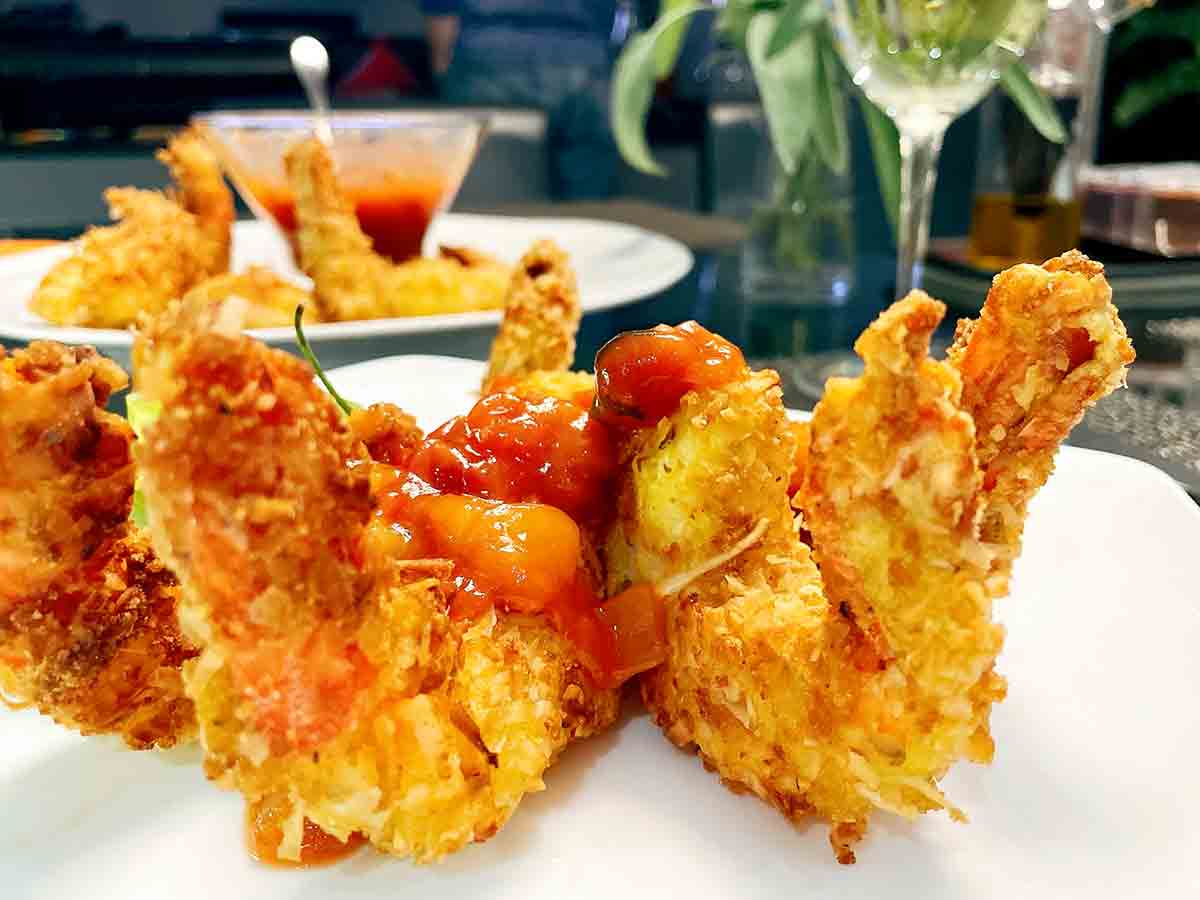
Did the shrimp need the mango salsa? Oh, yes it did! Here, for lack of time, I cheated and bought a good quality mango salsa that my family really enjoys. I added 1 chipotle in adobo sauce and fresh chopped cilantro. I also left it chunky.
Delicious! The batter is light and crispy. The shrimp are moist. The mango-habanero salsa just works with these coconut shrimp. My family loved this recipe.
Keeping your oil at a steady 350°F ensures that your shrimp won’t burn but will still be wonderfully moist. Using both sweetened and unsweetened coconut along with breadcrumbs means you have a tasty coating that’s not too sweet.
Then comes the salsa. Make it as hot or as mild as you want. I wanted only a bit of heat so I used less of the habanero chiles than called for. The combination of the salsa with these beautiful shrimp is perfect. This recipe makes a good size batch of shrimp. I froze my leftover prepared shrimp on a baking sheet then tossed them in a plastic freezer bag to put under the broiler for a future snack, lunch, or dinner.
Talk about WOW effect in a short amount of time! These coconut shrimp will stay in the rotation for quick dinner and for a quick hot appetizer. The sweetened coconut browned and became chewy while the unsweetened was crunchy. Combine that with the bright zingy salsa and this recipe hits all the right notes.
I used 16-20 count local shrimp and we devoured them. I’d definitely say only 4 servings as a main course, you would want that many of them, and 8 to 10 appetizer servings.
I like that you can make the salsa and thaw the shrimp ahead of time then pull everything else together right before serving.
We served this as part of a tailgate spread but I look forward to having this as dinner. There was a lot of salsa leftover. I plan on freezing half to use again. It will be great on fish tacos, with cream cheese on a cracker, part of a charcuterie board, etc.




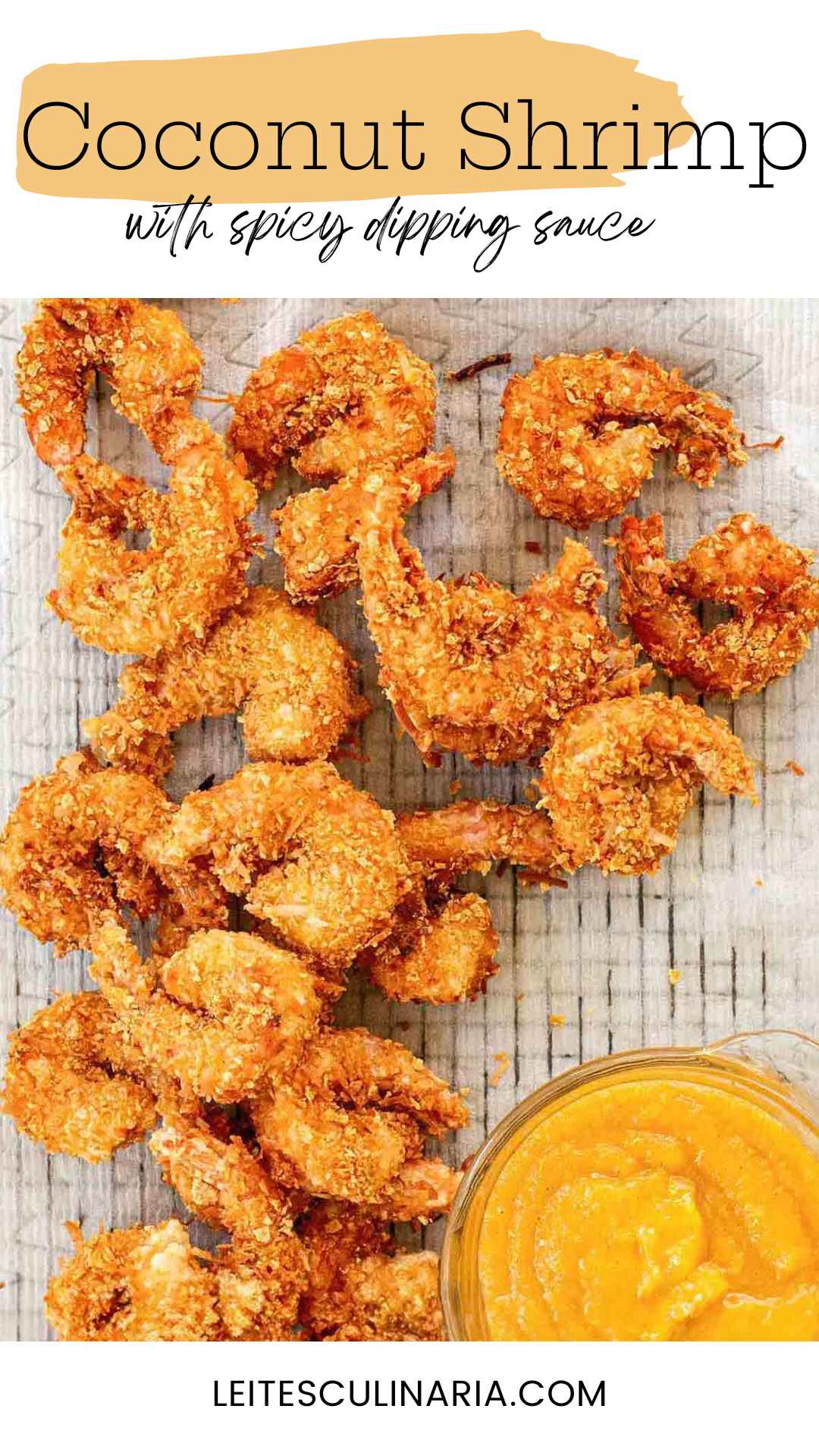
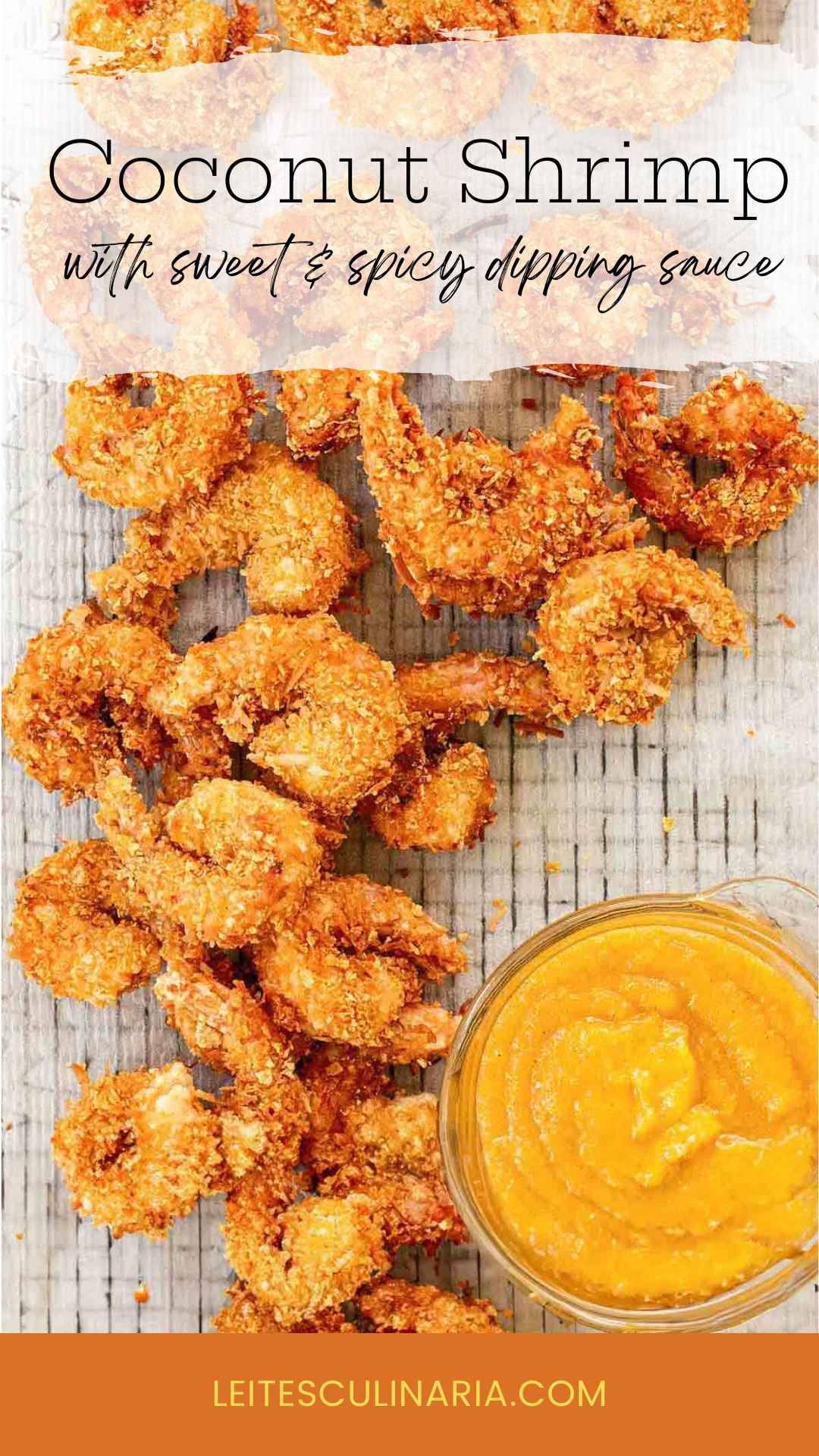

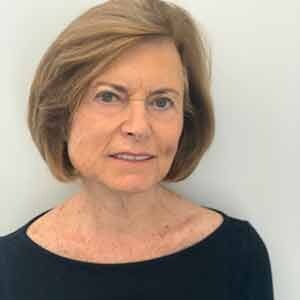











Is it possible to make this early in the day? Or is it best to make it and eat it right away?
We don’t recommend making them in advance, Mary. The shrimp will lose that crispiness that makes them so tasty.
Have made these and use regular orange marmalade as a dipping sauce. Delicious!
Wonderful, Lloyd! Thanks so much for taking the time to comment.